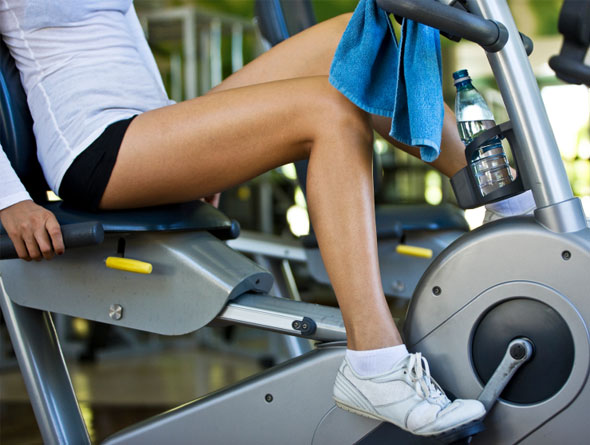Minutes after you start cycling, you will probably feel some increasing aches and pains. These issues commonly happen with new riders who haven’t got used to exercise. But it doesn’t mean second riders are not involved. There are some cases, users have grown accustomed to bike setup and training routine but one day they suddenly feel some knee or back pain. Simple aches and pains can be cured by traditional methods like rest, ice-and with the following fixes.

Hip Pain
What exactly is it and why does it happen? As you push too much high gears, havoc on your hips can be caused.
How to deal with this? Gear back and raise your cadence to release pressure out of your hips (it is recommended to check the glute-strengthening guides in Knee). Another choice is to do yoga positions like the pigeon, where one of your legs is bent 90 degrees in front of you and the other is stretched behind you.
Knee Pain
What exactly is it and why does it happen? Knee pains are commonly consequence of wrong saddle and cleat position, feeble outer glutes, and sometimes doing too much exercise at the beginning of the workout, especially in a big gear.
How to deal with this? If you feel pain in the front of your knee, then your saddle should be too low. Similarly, the pain is in the back, then your saddle is too high. For these both cases, spin an easier gear, then enhance your external glutes with side leg exercises such as side lunges and side leg raises. After that, expand your quads, iliotibial bands and hamstrings. And finally, exercise with your professional bike fit.
Foot Pain
What exactly is it and why does it happen? Foot pains happen when you feel hot spots, pain under your foot’s ball, numb toes (because the pressure is focused on one part of your sole, which squeezes the nerves between your foot bones). These pains happen to experienced cyclists who have never suffered from such pain before because the fat pads in their feet shrink over time, making the nerves poor-protected.
How to deal with this? For toe numbing, simply untighten your shoes. If the shoes are already loose, let’s try larger ones. For burning, slide your cleats back completely, try shoes with a firmer sole or check broader-platform pedals. One of the best ways to avoid this issue is to change your pedals regularly. If you ride with the speed of no more 5,000 miles, change them once a year. If you ride in higher mileage, change them more regularly.
Back Pain
What exactly is it and why does it happen? Tiredness, age-related wear and tear, improper bike fit and a weak core are possible causes of pain and strain.
How to deal with this? Implement plank exercises to reinforce your core, then spread your hamstrings. Pay attention to our bike fit to make sure that you’re not overreaching. Note that after certain time of riding the bike, you may need to change your riding position to make up for the decreased.
Hand Pain
What exactly is it and why does it happen? Too much pressure on nerves in your hand can lead to numb, and pain in your wrists. In addition, the fact that you have too much weight on your hands or get your wrists cocked at risky angle can be the reason of the pain.
How to deal with this? Simply, wear lightly padded gloves. Keep the bar with your wrists in a relaxed position (the position when you shake someone’s hand). Make sure that your saddle’s nose isn’t tipped down or it will shift your weight too far onward and onto your hands.
Neck Pain
What exactly is it and why does it happen? Over-reaching will puts too much tension via your shoulders and your upper back as well.
How to deal with this? Sit on your bike so that when you look at the front wheel with your hands on the hoods, your bar will hinder your view of the hub. Let your shoulders relaxed when riding.
Ankle Pain
What exactly is it and why does it happen? Ankle pain is normally caused by doing too much exercise too soon. Also, if you let your cleats too far forward, making you pedal on your toes, then you can make strain on the Achilles.
How to deal with this? Traditionally, ice the pain area and use anti-inflammatories. Expand by putting your foot’s ball area on a step and keeping your heel hanging off the edge. Keep the position within 20 seconds and move your cleats back at the same time.
OK, above are the 7 most common cycling aches and pains and solutions to them. You have suffered from them at least once, right? Now are you clear about how to deal with them?

Diana Paul is a certified nutritionist who writes for leading health blogs. She is a master herbalist, yoga teacher, forager, and wild-crafting writer She is focused on helping people transform life blocks to opportunities. Based in NYC, she often holds health seminars and lectures.
